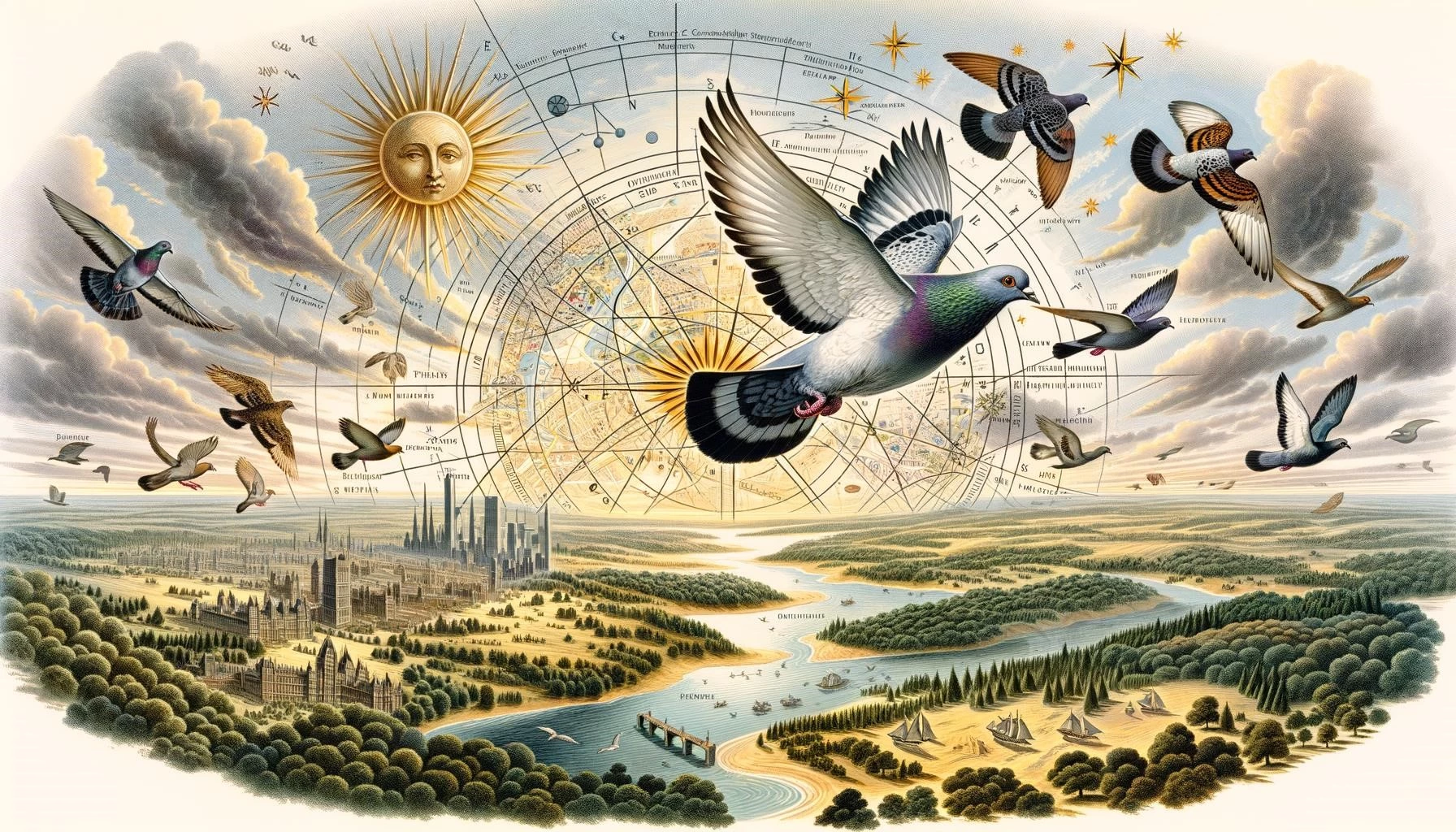Flocking behavior, the phenomenon of birds coming together in groups and moving as one entity in flight, is a fascinating and complex behavior that has been observed in various bird species, including pigeons. Flocking provides several advantages to birds, including safety in numbers, efficient foraging, and social bonding and communication. This behavior is not only important for their survival but also holds symbolic and cultural significance in different cultures and belief systems. In this article, we will explore the key aspects of pigeon flocking behavior and its significance in the natural world.
Key Takeaways
- Flocking behavior refers to birds coming together in groups and moving as one entity in flight.
- Pigeons exhibit flocking behavior, which provides advantages such as safety in numbers, efficient foraging, and social bonding and communication.
- Flocking behavior has symbolic and cultural significance in different cultures and belief systems.
Flocking Behavior: Safety in Numbers
One of the primary advantages of flocking behavior is the safety it provides for individual birds. By flying in a large group, birds decrease their individual risk of predation. The sheer number of birds makes it difficult for predators to single out one bird from the flock. Predators also become confused by the coordinated movements of the flock, making it challenging to target individual birds.
Flocking Behavior: Efficient Foraging
A key benefit of flocking behavior is its role in efficient foraging. When a group of birds searches for food together, they increase their chances of finding resources. Birds can share information about food sources within the flock, allowing them to quickly locate and exploit feeding opportunities. This collaborative behavior saves time and energy for the birds and ensures a more successful foraging experience.
Flocking Behavior: Social Bonding and Communication
Flocking behavior plays a vital role in social bonding and communication among birds. The proximity of birds within a flock allows for constant interaction and exchange of information. Birds communicate through vocalizations, visual displays, and body language, all of which are enhanced within a flock. This communication helps to maintain social cohesion within the group and facilitates collective decision-making, such as choosing flight routes or detecting potential threats.
The presence of birds, particularly flocks of birds, holds symbolic meanings in various cultures around the world. Different bird species have different symbolic interpretations, and their presence is often associated with specific cultural beliefs and values.
In many cultures, specific bird species are considered symbols of certain qualities or virtues. For example, the eagle is often viewed as a symbol of strength and wisdom, while the dove is seen as a symbol of peace and love. The interpretation of bird symbolism can vary depending on cultural beliefs and values.
The symbolism of flocks of birds in different cultures can differ widely. In some cultures, such as Native American tribes, the presence of a flock of birds may be seen as a sign of divine guidance or protection. In other cultures, such as Asian cultures, birds are believed to bring good luck and prosperity. These interpretations highlight the cultural significance and diversity of bird symbolism around the world.
Flocks of birds are often seen as messengers from the divine in many cultures. Their synchronized movements and unified flight patterns are believed to carry spiritual messages or omens. The appearance of a flock of birds may be interpreted as a sign of guidance, warning, or affirmation from a higher power.
Birds, especially in the context of flocks or migrations, have spiritual and mystical interpretations in various belief systems and practices. These interpretations often center around dreams and omens, animal totems and spirit guides, and the metaphorical significance of bird migration.
In many cultures, birds are seen as symbols in dreams and omens. The presence of a specific bird or a flock of birds in a dream is believed to carry symbolic messages or insights into the future. For example, dreaming of a flock of birds flying above may signify freedom or a period of transformation in one’s life. These interpretations add a spiritual and mysterious dimension to the symbolism of birds.
Birds, particularly when they appear in flocks, can serve as animal totems and spirit guides in some spiritual practices. An animal totem represents a spiritual guardian or guide that provides guidance, protection, and insight. Birds, with their ability to fly and navigate diverse landscapes, are often associated with freedom, adaptability, and spiritual transcendence.
Bird migration holds metaphorical significance in various cultures and philosophies. The journey of birds during migration is often seen as a symbolic representation of life’s transformative processes. The ability of birds to navigate great distances and adapt to changing environments resonates with human experiences of growth, change, and personal transformation.
Scientists have conducted extensive studies on the behavior, ecology, navigation abilities, and collective intelligence of flocking birds. These studies have shed light on the mechanisms and benefits of flocking behavior.
Researchers have studied the behavior and ecology of flocking birds to understand how they interact and adapt to their environment. They have observed that birds in flocks exhibit coordinated movements and adjust their flight patterns based on the behavior of neighboring birds. This collective behavior enables birds to effectively navigate their surroundings and optimize their foraging efforts.
The navigation abilities of flocking birds have also been a subject of scientific inquiry. Scientists have discovered that birds in a flock rely on various cues, including visual landmarks, magnetic fields, and sun position, to navigate during migration. They have also found that certain individuals within the flock may take on navigational leadership roles, leading the flock in the right direction.
Overall, the flocking behavior of pigeons and other birds is a fascinating phenomenon that serves multiple purposes in their lives. It provides safety, improves foraging efficiency, and facilitates social bonding and communication. Additionally, the cultural and symbolic significance of flocking birds highlights the deep connection between humans and the natural world. Understanding and appreciating flocking behavior can lead to a greater appreciation for the complex web of life and the importance of conserving bird populations and their habitats.








